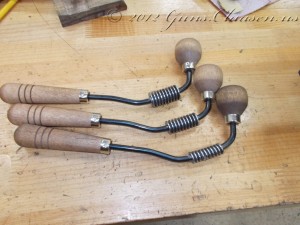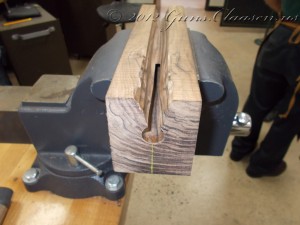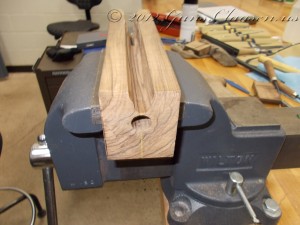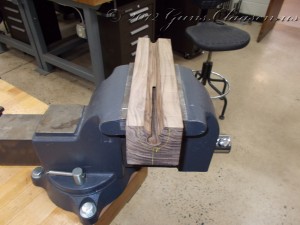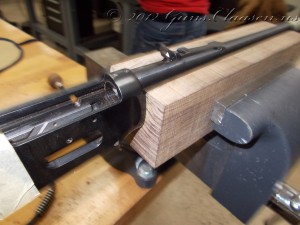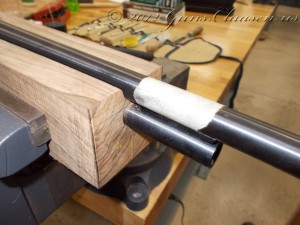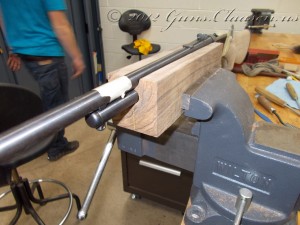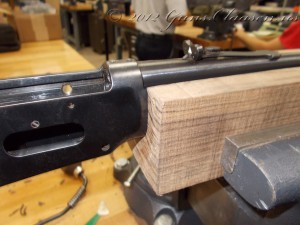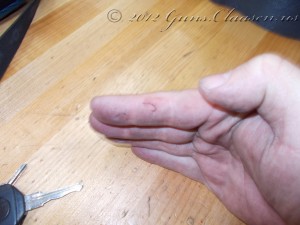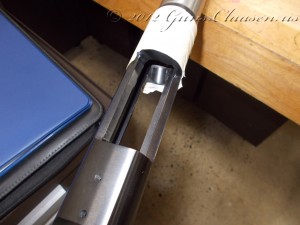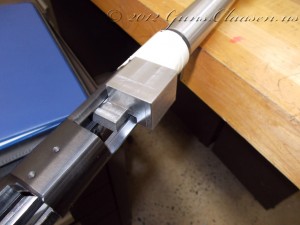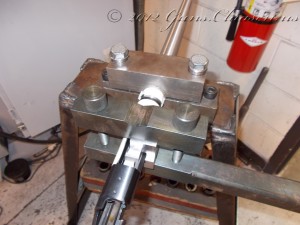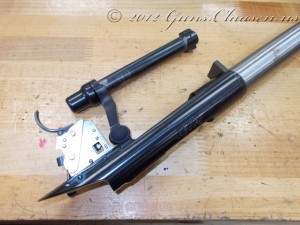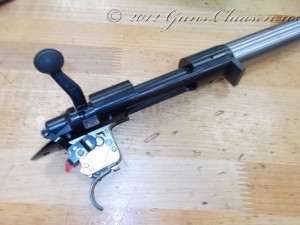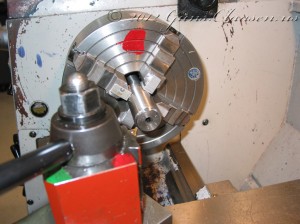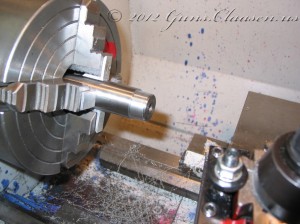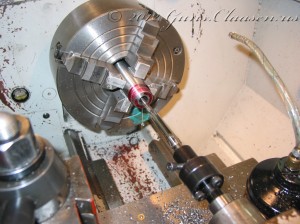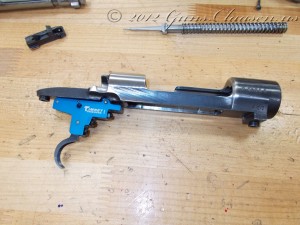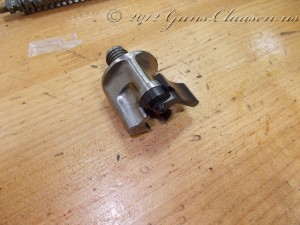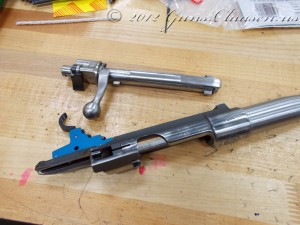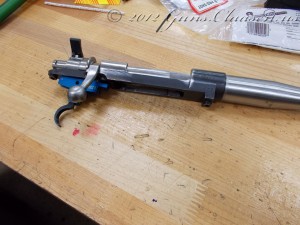Author Archive
 Winchester 94: fore end continued
Winchester 94: fore end continued
In my last post I promised to show some of the tools I use to make the barrel channel. These were almost exclusively used, starting with the smallest and using the biggest only when needed.
I continued to work the channel deeper. On the original fore end, there is a cut out section as the magazine tube is very close to the barrel.
With the barrel channel close to the correct depth I started doing the inletting to allow the fore end to fit the action. I marked the rough outline, applied inletting black to the action and barrel. Then the long process started in getting everything to fit. This is slow work and this part went better and quicker than on the butt stock.
I slowly worked at the back area and the depth until it fitted correctly.
I felt I did a better fitting job here as opposed to the butt stock. The next step is to fit the barrel band and then shape the fore end. During one of the test fittings, I had to appease the blood gods with a sacrifice. The bottom of the hole on the magazine tube had a sharp edge I forgot about and it managed to break some skin.
 Semester 2 wrap-up
Semester 2 wrap-up
This semester is over! I know I am still behind in posting the project updates but I am catching up!
Highlights for this semester:
Really awesome looking stock project on my Winchester 94!
Although unofficial, I have kept my GPA.
President’s list student.
Inducted into Phi Theta Kappa honors society.
Nominated by the college for the Governor Robert W. Scott Student Leadership Award.
Elected president of MCC Student Government Association.
Thank you everyone for the words of support and for following my work!
 Remington 700: Fitting the barrel
Remington 700: Fitting the barrel
Back to the Remington 700 project. I finished the barrel and the blueprinting of the bolt and the receiver. It is now time to fit the barrel and test fire the rifle. The masking tape you see in the photos is to protect the action from scratches.
The Remington 700 receiver is easy to damage if twisted. To prevent damage like this I use a wrench adapter that I made during our first semester.
Once I installed the wrench adapter, I clamped the barrel in a barrel vice (yes, I made one of those in my first semester but the one you belongs to the school) and use an action wrench to tighten the barrel. Yes, the action wrench you see was a first semester project. Normally, I would use an a tool to hold the recoil lug in alignment during this step, but it was not needed as the action would be removed from the barrel after the test fire.
Once this was done, I installed the trigger and the rifle was ready to test fire.
Next was the test fire! Test firing consists of three rounds fired from the rifle. After the test fire, the cartridge cases are checked for expansion. We are allowed an expansion of 0.002 inches (0.0508mm or 50.8 micron). Here is a video of the test fire.
The results of the test fire was good. Zero case expansion. I am more than happy with that. The next step for this rifle is to install a muzzle brake and I will detail that in the next post.
 Mauser project: Barrel, trigger and safety
Mauser project: Barrel, trigger and safety
As our semester is winding down, I am still playing catch up on posting my projects. Today, I will update some of the work I did on the Mauser. After completing work on the receiver and bolt, I am turning my attention to the barrel, installing a new trigger and a low position safety. I clamped the barrel and centered it in a 4-jaw chuck on the lathe.
After facing the barrel, I cut the tenon.
I then cut the threads needed to attach the barrel to the receiver including a relief cut at the shoulder part of the tenon. This is to ensure the receiver fits tightly onto the barrel. I verified that the face of the barrel was also touching inside the receiver. In the picture, I am busy reaming the chamber (.257 Roberts). The red marks you see is a marking fluid that I used to ensure all the metal surfaces that should make contact with each other is in fact doing so.
With the barrel chambering complete, I turned my attention to the action. First, I installed a Timney Sportsmen trigger. I also installed a Beuhler-style low safety.
Once I completed this, I attached the barrel.
The next step for the action is to test fire it and check that the case expansion is good. I also have some other metal work to do and I will cover that in a future post.
 Some college and blog news
Some college and blog news
I am happy to say that the blog will pass the 1000 view mark today or at the latest tomorrow. Thank you to everyone that read and viewed articles on the site.
(Edit: Yes, passed the 1K mark!)
In some college news related to my studies, I am happy to report that I am now a member of the Phi Theta Kappa honors society.
